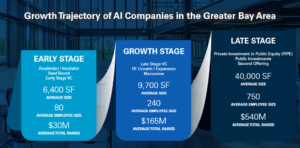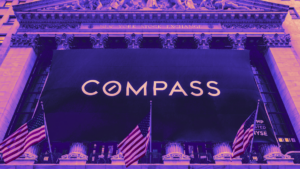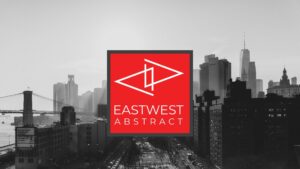Sale-Leasebacks vs. Commercial Loans
In the ever-evolving landscape of business finance, owners who occupy their own commercial properties have a unique opportunity to consider and compare sale leaseback transactions to traditional commercial loans to fund growth for their business. Both options offer unique advantages and potential drawbacks. Below we provide a comprehensive comparison to help you help business owners make an informed decision on which option may work best for their business.
Sale-leaseback basics
A sale leaseback is a financial transaction where an owner occupant of a commercial property sells their property to an investor and then leases it back for a specific amount of time. Sale leasebacks allow the business to continue operating from the same location while unlocking the capital and appreciation in the property. The length of lease term and the company’s credit worthiness are typically the most significant factors affecting the valuation and price paid to the owner occupant for their property.
Sale-leasebacks offer a lot of advantages to businesses, including:
Immediate access to capital: One of the most significant benefits of a sale leaseback is the immediate liquidity it provides. Businesses can access 100 percent of the property’s value, which can be reinvested into the business for growth, expansion, debt reduction, or other strategic initiatives. Capturing the built-up appreciation provides a source of capital for their business without increasing the businesses overall debt. burden.
Improved balance sheet: By converting a fixed asset into liquid capital, businesses can improve their balance sheet. This can lead to better financial ratios and potentially more favorable terms for future financing.
Tax benefits: Lease payments are often fully deductible as a business expense, which can provide significant tax advantages compared to the depreciation and interest rate annual write off for owning property.
Operational continuity: Businesses can continue to operate from the same location without disruption, maintaining customer relationships and operational efficiency.
On the other hand, sale-leasebacks do have some drawbacks. Among them are:
Loss of property ownership: The most apparent drawback is the loss of property ownership. The business no longer benefits from property appreciation and must adhere to the mutually negotiated terms of the new lease.
Long-term lease obligations: To achieve the highest values, sale leaseback agreements typically involve long-term leases, as long as 10-15 years, which can be a financial burden if the business’s circumstances change.
Potential for higher hosts: Over time, lease payments may exceed the costs of owning the property, compared to commercial mortgages.
Commercial loan basics
The advantages of taking on a commercial loan include:
Retained ownership: Businesses retain ownership of the property, allowing them to benefit from any potential future appreciation in value of the property.
Potential for lower long-term costs: Depending on interest rates and property appreciation, owning the property may be more cost-effective eventually compared to leasing given mortgage rates are typically at lower interest rates than a commercial loans.
And, of course, there are some downsides, including
Debt obligation: Taking on a commercial loan increases the business’s debt load, which can impact financial ratios and future borrowing capacity.
Upfront costs: Commercial loans often require upfront closing costs, and bank fees.
Floating payments: Many commercial loans carry floating interest rates, providing unpredictable monthly payments and a more difficult budgeting for business owners.
Risk of default: If the business is unable to meet loan payments, there is a risk of foreclosure, which can result in the loss of the property and downgrading of your company’s credit and financial rating.
Comparing Sale Leaseback and Commercial Loans
When deciding between a sale leaseback and a commercial loan, the most significant factors for business owners to consider are:
Financial goals: If immediate liquidity is a priority, a sale leaseback may be more advantageous. Conversely, if long-term property ownership and potential appreciation are important, a commercial loan might be better.
Tax considerations: The tax implications of each option can vary significantly. Lease payments in a sale leaseback are typically fully deductible, while commercial loan interest and depreciation can offer less advantageous tax benefits.
Market conditions: Current market conditions, including property values and interest rates, can influence the attractiveness of each option. High property values may make a sale leaseback more appealing, while low interest rates could favor a commercial loan.
Investor disposition: Understanding investor disposition for future market conditions can have a significant affect on property valuation in a sale leaseback transaction.
Flexibility and control: Business owners who value flexibility and control over their property may prefer a commercial loan. Those who prioritize liquidity and operational continuity might lean towards a sale leaseback.
Lease term: The type of investor will determine the required lease term, structure and valuation in the purchase of the property. Typically, the longer the lease term, the lower the capitalization rates and the higher the property valuation. Investors groups that will consider shorter lease terms (less than five years) will value the property lower, 15 to 25 percent lower, than investors groups that require a minimum of ten to 15 years.
Both sale leasebacks and commercial loans offer different benefits and drawbacks. The best option depends on the specific needs and circumstances of the business. By carefully considering financial goals, tax implications, market conditions, and the desired level of control, business owners can make an informed decision that supports their long-term success.
For businesses that own and occupy their commercial properties, exploring both options with the guidance of financial and real estate professionals can provide owner occupants maximum flexibility in planning their businesses expansion and growth.
Daniel Levison is principal broker for Commercial Property Consultants & CEO of CRE Holdings LLC.
The post Sale-Leasebacks vs. Commercial Loans appeared first on Commercial Property Executive.







